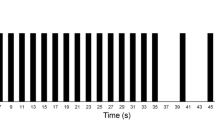Abstract
Continuous evolution of multi row CT is increasingly making CT angiography a viable imaging modality for assessment of the supraaortic and intracranial vessels as an anatomically and functionally coherent vascular system. Extended non-invasive examinations with reduced contrast volume have become feasible with the availability of 16 and 64 row MDCT scanners. Prerequisites to obtain high resolution CT angiographies of the head and neck vessels with superior detail include the administration of low contrast volume, high contrast density (400 mg I/ml) contrast media, adequate timing and data acquisition, optimal flow rate (4 ml/s) and saline flushing. Non-invasiveness, delineation of vessel calcification, virtual independence from hemodynamic conditions, and the ability to provide quantification without needing to correct for magnification are all attributes that favour CT angiography over digital subtraction angiography and to some extent even magnetic resonance angiography as an alternative non-invasive technique. CT angiography is established as a modality of choice for the assessment of patients with acute stroke and chronic steno-occlusive disease. CT angiography may indicate the presence of extra- or intracranial acute vessel occlusion and dissection, predisposing atherosclerotic steno-occlusive disease and thus indicate thrombo-embolism or local appositional thrombosis as the principle pathogenic factor. CT angiography is used to assess anatomy, and to depict the presence, location and extent of calcified and non-calcified plaque as a cause of high grade stenosis. Despite relatively limited sensitivity CT angiography is indicated for suspected or confirmed aneurysms that demand further verification of their presence, geometry, or relationship to parent artery branches and osseous anatomic landmarks. Low volume high density contrast media have substantially increased the ability of CT angiography to depict small aneurysms, small branches, and collateral vessels, and to recognize the residual lumen in vessels with high grade stenosis or conditions such as dissection or pseudo-occlusion. Superior detail high resolution CT angiography is thus a viable alternative to DSA, relegating the latter technique to endovascular treatment applications only.
Similar content being viewed by others
Author information
Authors and Affiliations
Corresponding author
Rights and permissions
About this article
Cite this article
Schuknecht, B. Latest techniques in head and neck CT angiography. Neuroradiology 46 (Suppl 2), s208–s213 (2004). https://doi.org/10.1007/s00234-004-1334-8
Issue Date:
DOI: https://doi.org/10.1007/s00234-004-1334-8




